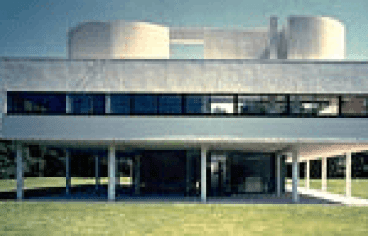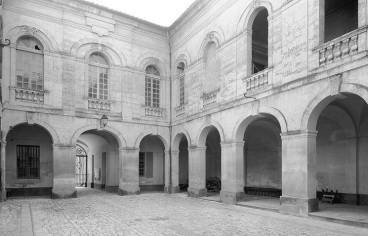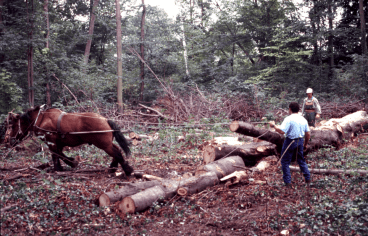Protecting buildings as historic monuments
The protection of buildings built or not built as historic monuments constitutes a public easement. There are two levels of protection for historic monuments: inscription and classification. In both cases, the protection must be justified by the interest of the building from the point of view of history or art. Registration is the first level of protection, and ranking is the highest level. The classification results in a higher level of requirement than for registration, particularly as regards the level of qualification of architects in charge of the restoration of listed buildings.
- The balance sheet of protection
- The conditions of the protection
- The protection procedure
- The effects of protection
The balance sheet of protection
At 1er January 2022, 44,769 buildings are protected as historic monuments, including 14,273 listed buildings and 30,496 listed buildings.
The annual protection report of buildings as historical monuments allows to have a state of protection in terms of statistics, typologies, dating, nature of the owners.
The conditions of the protection
Any type ofbuilt building (building, structure, etc.) orunbuilt building (park or garden, ornate cave, terrain containing archaeological remains, etc.) may be protected in whole or in part. In some cases, only the most remarkable parts are protected: facade and roofs, staircase, fireplace, decorated room, etc. The same building may be subject to classification or inscription measures. A regular review of the protections is carried out by the State services in charge of historic monuments.
Protection under historic monuments may concern buildings of any type of architecture (rural, industrial, commercial, etc.) and all time. Thus, the industrial, scientific and technical heritage (factories, buildings and railway works of art, etc.) takes an increasingly important place among the protected heritage, just like the heritage of the XIXe and XXe centuries.
Protection under historic monuments, however, is not intended to apply to the most recent buildings built less than 50 years ago. Protection under historic monuments is, in principle, irreversible and requires sufficient historical hindsight. The more recent and remarkable buildings are therefore intended to receive the label Remarkable contemporary architecture.
The interest historical or artistic of the immovable is the determining criterion for protection. The inscription measure is decided at regional level (decision of the prefect of region after opinion of the regional commission of heritage and architecture) while the classification is decided at national level (decision of the Minister of Culture after consulting the National Commission of Heritage and Architecture).
In view of these criteria and conditions, the heritage interest of a building is evaluated in particular according to its architectural or artistic quality, its authenticity, its integrity, its rarity, its exemplarity, its representativeness in relation to a corpus or a type.
Protection under historic monuments is not the only protection measure applicable to buildings of heritage interest.
When the heritage interest of a building does not result from its own characteristics, as a building in isolation, but from its integration into a remarkable urban complex (city, village or neighbourhood), protection may be considered under remarkable heritage sites.
Built or non-built buildings of local heritage interest - often referred to as small heritage » - are intended to be protected by the local urban plan (PLU). Their protection must be sought from the competent authority (mayor or president of the intercommunality).
The protection procedure
The request for protection under historic monuments may come from the owner of the property, the assignee, or any person having an interest in it (territorial collectivity, heritage defence association, etc.). The initiative for protection can also come from the services of the prefect of the region (regional directorate of cultural affairs) or the Minister of Culture (general directorate of heritage and architecture).
Applications for the classification or inscription of buildings as historic monuments must be addressed to the regional prefect (Regional Directorate for Cultural Affairs). They must be accompanied by the description of the building, elements relating to its history and architecture, as well as photographs and graphic documents representing it in its entirety and in its most interesting aspects from the point of view of history or art.
Theregistration in respect of historical monuments is decided by order of the prefect of region, after the opinion of the regional heritage and architecture commission.
The ranking as historical monuments is decided by order of the Minister of Culture, after notice of the National Heritage and Architecture Commission, preceded by a wish of the Regional Commission for Heritage and Architecture, and in the light of the owner’s agreement. In the absence of agreement of the owner, the classification of an immovable may be pronounced by decree in the Council of State, but this procedure remains exceptional.
Where the conservation of a building of heritage interest is threatened, a filing authority in respect of historic monuments may be decided by the Minister of Culture. This decision places the property under classification for twelve months, leaving time for the State services to examine the advisability of a final protection decision (registration or classification). This is an exceptional measure.
Application for protection under historic monuments
The effects of protection
The owner is responsible for the conservation of the historic monument that belongs to him. When selling his property, he has the obligation to inform the new purchaser of the existence of the easement of classification or registration, and to inform the prefect of region within fifteen days.
Apart from routine maintenance work without formalities, thelisted building in respect of historic monuments may not be destroyed or moved or be the subject of work without authorization issued by the prefect of region. Authorized work is performed under the scientific and technical control (CSE) the State services responsible for historic monuments, which are carried out from the beginning of the preparatory documentary and technical studies and throughout the works until their completion. The project management of these works must be entrusted to categories of specialized professionals.
The State may put the defaulting owner on notice to carry out the work that has become essential to ensure the conservation of the listed building. In the event of inaction by the owner, the regional prefect may either carry out the work ex officio by making the owner pay a share of the financing or initiate an expropriation procedure.
Apart from the maintenance work without formalities, the work on thelisted building are subject, in most cases, to a permit (to construct, demolish or develop) or prior declaration under the Urban Planning Code. The issuance of the permit or the non-opposition to the prior declaration comes after agreement of the prefect of region. Authorized work is performed under the scientific and technical control State services in charge of historic monuments that are carried out throughout the works until their completion. The project management of these works must be entrusted to an architect when they are subject to building permits under the urban planning code. No specific architect qualification requirements are required.
For more information: consult the Book VI of the Heritage Code (part legislative and regulatory) on www.legifrance.gouv.fr
Partager la page


